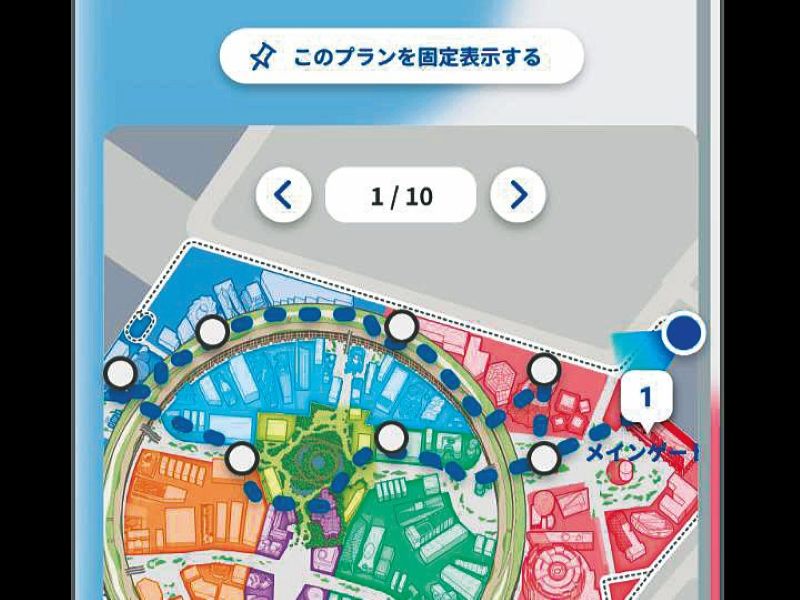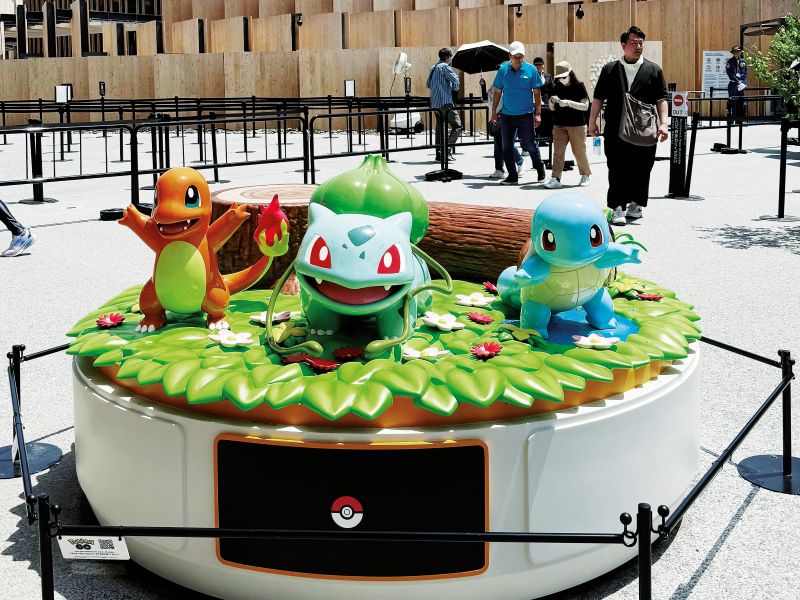
Expo 2025 has assembled more than 150 countries and organisations in a collective exercise of inquiry and reflection (Photo" Reuters)
When Osaka first hosted the World Expo in 1970, nearly a quarter-century after WWII, Japan was in the midst of its post-war economic miracle. For a rising powerhouse brimming with newfound confidence in its identity and technological ambition, the event was historic: the first world’s fair held in Asia, showcasing bold innovations — from moving walkways and prototype cordless phones to a 230ft sculpture with a golden mask gazing into the horizon. It drew 64 million visitors, more than half the population of the thriving archipelago at the time.
Now, 55 years later, the world has returned to the same city under different circumstances but with no less urgency. Set on the man-made island of Yumeshima, Expo 2025 has assembled more than 150 countries and organisations in a collective exercise of inquiry and reflection: How should we live well — and longer — in a political and social landscape tackling climate strain, demographic shifts and digital overload? The theme “Designing Future Society for Our Lives” is broad in scope but the questions it raises are personal and immediate, spanning health, sustainability and equity.
While these challenges may seem weighty, the World Expo, held every five years, leans into curiosity and engagement, devising creative interactions that visitors can touch, see and consider. As the host of the 2025 edition, Japan has stepped into the role of a cheerleader, convening nations with competing interests or long-running tensions in a shared space where dialogue is possible, and optimism, for once, feels like common ground. If hope needs a shape, we can all take a cue from Myaku-Myaku, the amorphous, red-and-blue mascot whose name speaks to continuity — of knowledge, tradition and change passed from one generation to the next.
myaku_myaku.jpg
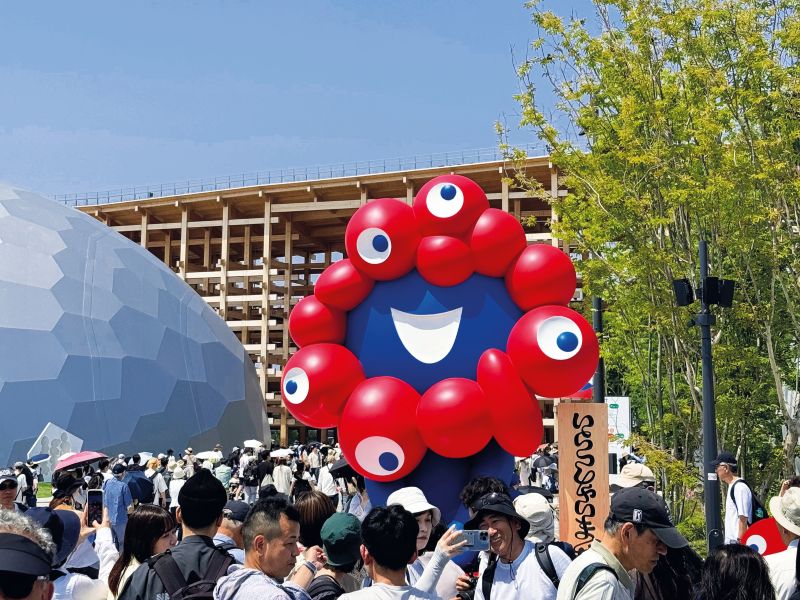
Getting there
Reaching the 155ha-site is remarkably convenient, thanks to Osaka’s role as a key transport hub in the Kansai region of western Honshu. Yumeshima is served by the extended Metro Chuo Line, with easy transfers from the JR Osaka Loop Line at Bentencho Station and the Midosuji Subway
Line at Honmachi Station. Travellers coming from Tokyo or Kyoto can hop on the JR Tokaido Shinkansen to Shin-Osaka station, then continue by local train. They will arrive at the East Gate, the entrance closest to the Malaysian pavilion. A newly introduced express bus offers direct access to the expo in roughly 85 minutes. Operated by Keihin Bus Co, the Kyoto Express Osaka-Kansai Expo route departs from Kyoto Station’s Hachijo Exit (¥2,000 or RM59 for adults) via the Kyotanabe Expressway. There is one round-trip on weekdays, two on weekends and holidays.
Those looking to pair their visit with a regional adventure may consider flying through Oita Airport, which — until Oct 13, the final day of the expo — has been renamed Oita Hello Kitty Airport. The full-scale Sanrio takeover includes exclusive décor inside and out, themed photo spots and limited-edition merchandise sold throughout the terminal.
Nations and notions
Upon arrival, visitors are greeted by a defining landmark: The Grand Ring. Stretching 2km and elevated 12m above ground, this sweeping circular promenade encircles the entire venue. Designed by Sou Fujimoto Architects, it has been officially recognised by Guinness World Records as the World’s Largest Wooden Architectural Structure, built with about 70% domestic timber — including cedar and cypress from Japan — and 30% imported Scots pine. More than a raised walkway with views overlooking the Osaka Bay or a shelter from volatile weather, the modular construction is a unifying gesture, linking countries, concepts and crowds in a continuous loop.
With so many pavilions to explore — some requiring advance reservations, like the popular Gundam and Future of Life Sciences — it pays to be selective. If time is limited, start with these standouts.
malaysia.jpg
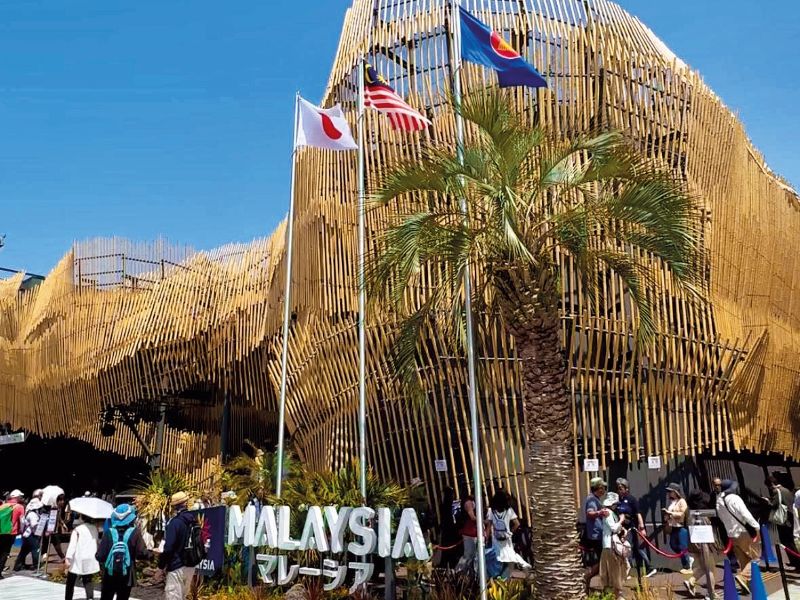
Naturally, Malaysians should begin on home ground. Designed by Kengo Kuma & Associates (also behind Portugal’s suspended-rope exterior and Qatar’s dhow boat-inspired seafaring hub that appears to float), our national pride is a sculptural statement in woven bamboo “ribbons”. Its façade evokes the textures of songket weaving and reflects a commitment to craftsmanship and environmental stewardship. Inside, Red Hong Yi’s Tree of Harmony — a bamboo-and-rattan centrepiece painstakingly handwoven by indigenous artisans — acts as a gateway to a biodome of tropical flora and fauna, rooting the theme of sustainability in a distinctly Southeast Asian vernacular.
More dramatic in tone is Saudi Arabia’s visionary feat by British studio Foster + Partners. Arranged to echo the meandering makeup of Saudi streets, the cluster of angular buildings leads to a dynamic central courtyard, prompting visitors on a trail of new discoveries, as if for the first time. Away from audio-visual overload, the passages are immersive — cinematic even — as films and physical artefacts chart a curated timeline of the Kingdom’s past and aspirations for the future. After nightfall, artworks created during artist residencies are projected onto the 17m-high walls, guided by ambient soundscapes that evolve with the atmosphere.
malaysia_pavilion_red_hongyi.jpg
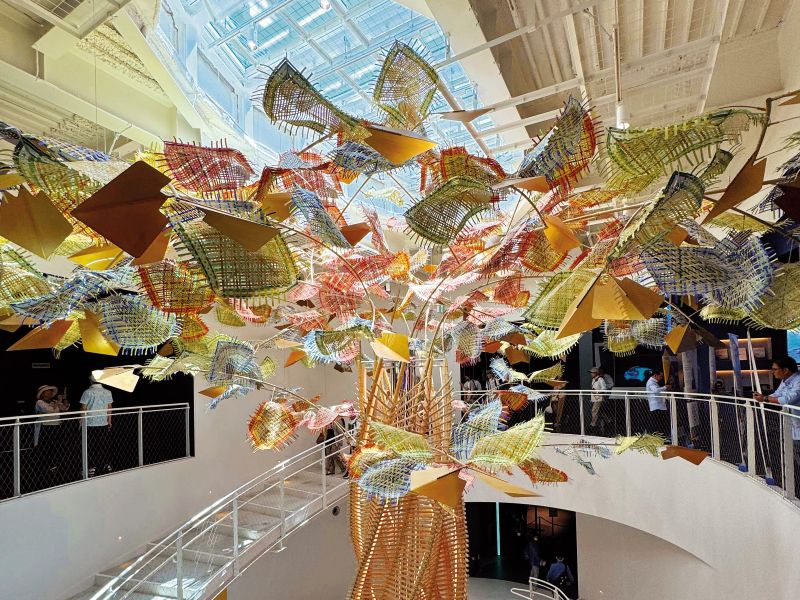
Closer to the heart of the site, Japan’s forest-like stronghold strikes a more introspective note. Titled “Between Lives” and conceptualised by Nikken Sekkei and Oki Sato, it rethinks the very concept of temporality. The 11,000 sq m footprint fans out in a radial, domino-esque layout of vertical CLT (cross-laminated timber) walls, conjuring up a series of concentric corridors. The wooden components — made to be easily disassembled and repurposed after — serve as both form and metaphor, alluding to cycles of life, decay and renewal. A biogas system processes food waste collected from the expo through microbial fermentation, converting it into electricity that powers the pavilion.
China’s physical manifesto is one of scale and serenity. Its imposing stature unfolds like a traditional scroll, while a façade of stacked bamboo bears 119 classic Chinese poems rendered in diverse calligraphic styles, drawn from texts such as Shi Jing (The Book of Songs) and Chu Ci (The Songs of Chu). These quiet flourishes carry an ambitious message: that ecological thinking and cultural literacy of a 5,000-year civilisation can — and must — exist in tandem. As people move through the towering setup, the relationship between human development and natural systems is traced with deliberate grace.
Equally evocative is France, whose focal point is a winding copper-clad staircase that leads to an observation deck. It nods to the Japanese belief in akai ito (a red thread of fate that binds destined encounters) as well as the grand steps of European theatres. Commanding a picture-perfect moment is a secret garden anchored by a 1,000-year-old olive tree, transported from France and set within a tranquil pool. A symbol of longevity, the living relic signifies the alliance between science and nature. Also worth queuing for are a sculpture salvaged from Notre-Dame, a room chronicling the history of Louis Vuitton by OMA, and a Lady Dior handbag reimagined by SANAA co-founder Kazuyo Sejima. With its luxury accents and couture references, the curation has been likened — perhaps half in jest — to an especially elegant LVMH flagship.
france_expo.jpg

The Netherlands, on the other hand, takes a distinctly conceptual turn. Conceived by RAU Architects, the visual language revolves around a suspended orb: solar-like, radiant and unmistakable even from afar. Spanning 425 sq m in honour of 425 years of Dutch–Japanese trade relations, the pavilion is fronted by gently rippling slats that lift to reveal multiple entrances. At its core, the 10.6m-wide sphere pierces the roofline, representing the sun and the promise of infinite energy — while also paying homage to Tarō Okamoto’s iconic Tower of the Sun from Expo 1970. The focus on hydropower as a renewable source ties the installation’s symbolism to the country’s deep-rooted history of water-based innovation.
Trust the Americans to deliver a sharp, theatrical contrast. Dreamt up by Trahan Architects, a V-shaped plaza informed by themes of nature and urban canyons frames a suspended digital cube in the middle. Onscreen, montages flicker with familiar Americana (think cowboy-hatted riders and shifting compositions of the national flag) while LED walls amplify the narrative, spotlighting contributions from space exploration to biotechnology, all underpinned by cultural diversity and entrepreneurial spirit. Occasionally tipping into self-congratulation, it is still a confident production that is refreshingly free of tariffs and trade rhetoric.
the_netherlands_pavilion.jpg
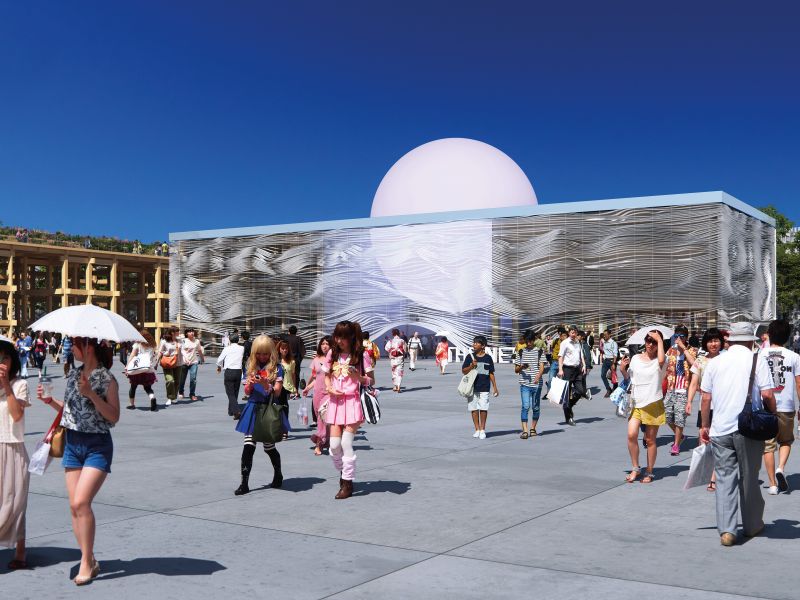
Borderless bites
Culinary discovery is just as essential to the expo experience as pavilion-hopping. Whether you are after Michelin-worthy bites, nostalgic comfort from the food court or a quick snack from Family Mart to keep pace, the choices are aplenty and wide-ranging.
For a taste of Kansai without straying far from the main ring, Takoyaki Dotonbori Kukuru peddles golden octopus balls with just the right char while Negiyaki Yamamoto flips savoury pancakes thick off the grill. Takeshita Seika serves a playful local twist with churros shaped like the word “Osaka”, made from repurposed rice flour sourced from Kyoto Tamanohikari Sake Brewing. But stealing the spotlight is
Kura Sushi’s record-breaking conveyor belt. Stretching 135m and fitted with AI-powered monitoring systems, it offers a rotating menu that blends classics with globally-inspired flavours from more than 70 participating countries.
portugal_food.jpg
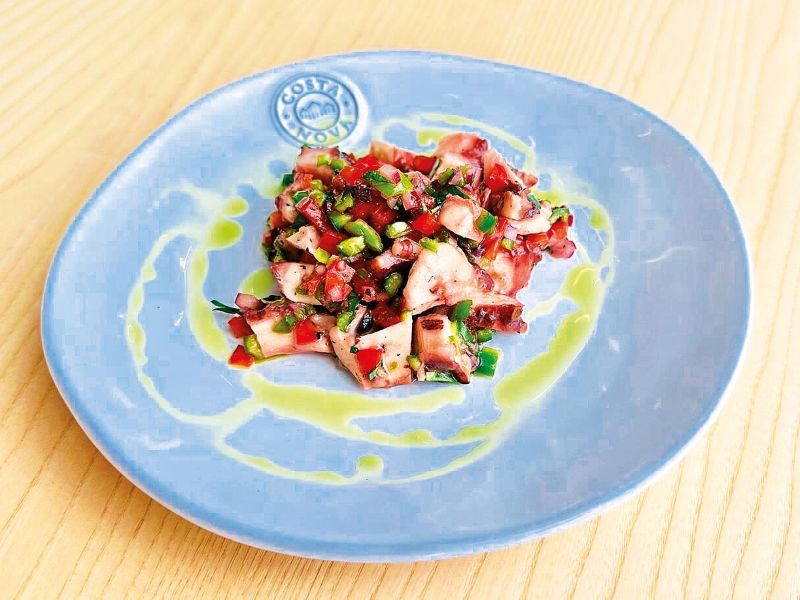
Several national showcases also double as gastronomic outposts. Our southern neighbour Singapore turns up the heat with chilli crab sauce and mantou; the Mar de Portugal channels a sun-drenched afternoon on the Algarve, complete with cod, octopus and crisp Atlantic wines; and Luxembourg swaps flash for finesse through its culinary heritage with feierstengszalot — a classic beef salad reimagined as roast beef in a brioche — as well as gromperekichelcher, spiced potato fritters.
And for a truly human moment, Maa Iika Café inside the Kansai Pavilion is staffed by individuals living with dementia, anchoring a poignant objective of hospitality that is both inclusive and radically hopeful. Operating from September to October, this limited-time pop-up affirms Japan’s commitment to a society where dignity and participation transcend cognitive boundaries.
Showstoppers
A constantly shifting calendar of performances and live gigs make the event more than just a walk-through of international ambition. As dusk descends, the Water Plaza transforms into the stage for Under the Midnight Rainbow, a 20-minute nighttime choreography that combines nearly 300 fountains, fire and lasers into an engaging story about air, water, and coexistence. Set on the largest aquatic platform in World Expo history, the show is scored by acclaimed composer Yoko Kanno, known for her work on Cowboy Bebop and Ghost in the Shell.
Just as compelling is One World, One Planet, a nightly drone and projection mapping that turns the sky into its canvas. Dozens of aerial flyers move in unison to craft a glowing constellation that conveys interconnection, planetary care and the fragile beauty of our shared home.
night_fountain.jpg
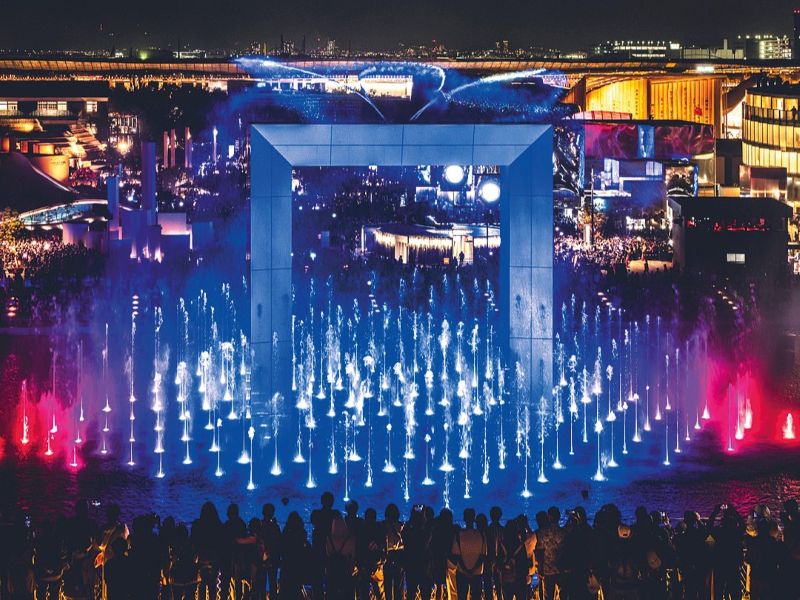
Adding to the cultural tapestry, the Tohoku Kizuna Festival brings the vibrant traditions of northeastern Japan to the heart of Osaka. On June 14 and 15, the “Matsuri” arena will host twice-daily parades featuring approximately 550 performers from the six Tohoku prefectures. This marks the first time the festival is held outside its home region, offering visitors a rare opportunity to experience the dynamic dances, intricate floats, and spirited music that define Tohoku’s summer celebrations. Originated in 2017 to honour the resilience of communities affected by the 2011 Great East Japan Earthquake, the festival spreads the message of unity and hope.
When the mercury rises, the Kansai capital turns its gaze skyward. Fireworks, or hanabi, have long been a seasonal ritual here, drawing crowds to riverbanks for colour, crackle and communal joy. That same spirit ignites Yumeshima on select nights, where a 20-minute pyrotechnics illuminates the southern seawall after sunset. Fleeting as fireflies but dazzling as stars, each burst seems to resonate with the expo’s own vision: brief yet brilliant, and built to inspire.
PATH FINDER
Handy hacks to help you get the most out of your visit
Purchase a stamp passport
Turn your tour into a collectible adventure. More than 150 unique stamps are scattered across the venue, in pavilions, event zones and shops. Each design reflects the cultural identity or theme of its location, making it one of the most charming ways to engage with the fair. The book is available for ¥1,100 (RM32).
Go cashless
The entire site operates on a cashless system. Purchases at shops and restaurants can be made using credit cards, IC cards like Suica, various digital payment platforms or the dedicated Expo 2025 Digital Wallet.
Stay connected
Although the Expo has its own official app, a separate visitor-friendly tool called Personal Agent enhances the on-site experience by using AI to provide real-time suggestions, customised itineraries and navigation tips tailored to your interests, mobility needs and time constraints.
Drink up
Stay hydrated at free water refill stations scattered across the grounds. Bring a reusable bottle and top up often — it is an easy way to keep cool and reduce waste.
Gotta catch 'em all
Look out for dedicated Pokémon photo spots, collect exclusive stamps and hunt rare finds like Unown, Snorlax and Lapras via the Pokémon GO app. It is a playful crossover of gaming and sightseeing, perfect for trainers of all ages.
Accessibility matters
Wheelchair users will find spacious pathways throughout the venue, with rental services near the East and West Gates. Designated parking is located at the Yumeshima Accessible Parking area, adjacent to the East Entrance Plaza. Most pavilions also have priority entrance lanes for wheelchair users and their companions.
The Expo 2025 Osaka runs until Oct 13. One-day pass from ¥7,500; multi-entry pass, ¥30,000. See more at expo2025.or.jp.
This article first appeared on June 9, 2025 in The Edge Malaysia.


